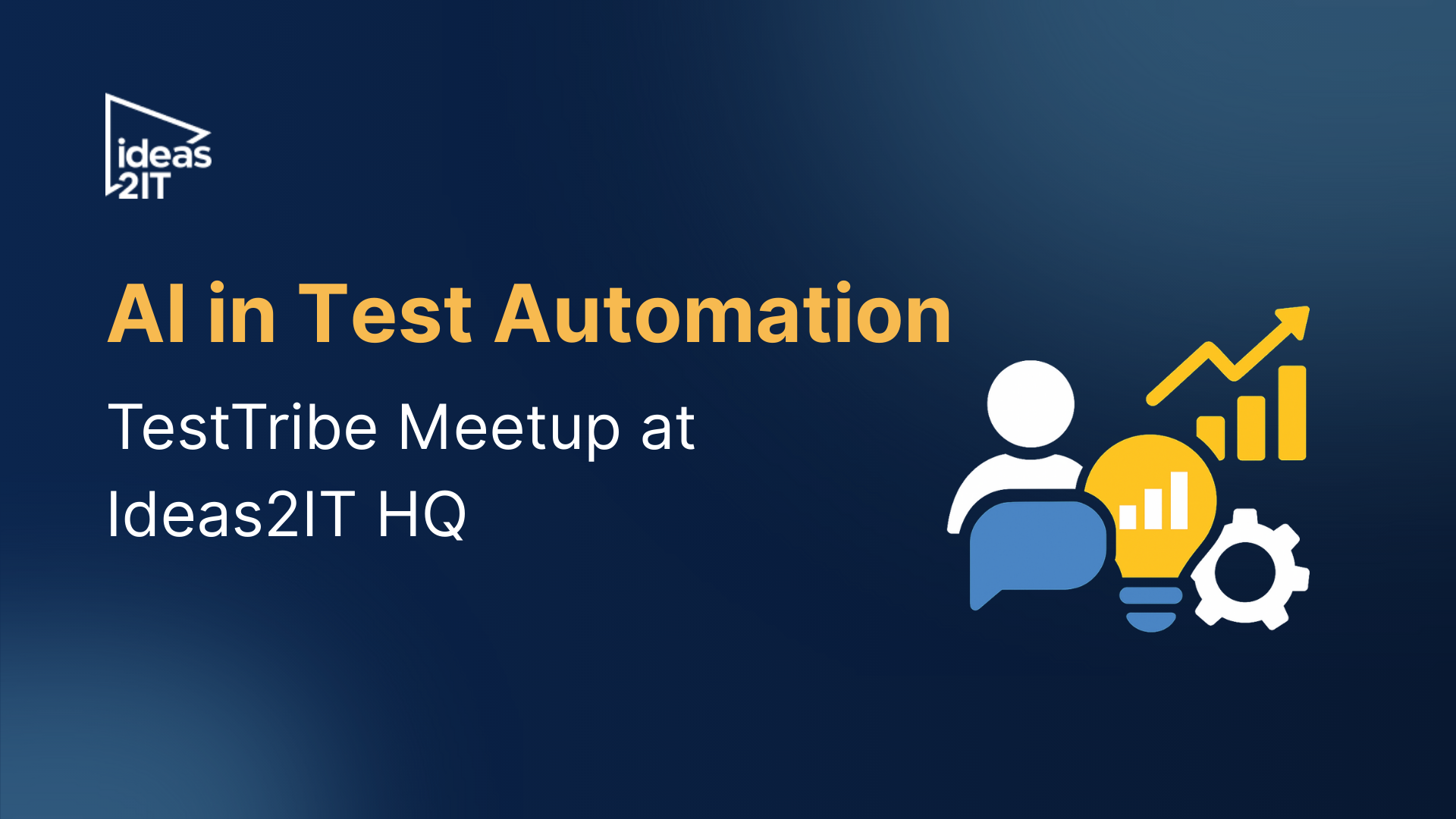Selenium 5: Transforming Automation and the Future of QA
TL'DR
- For two decades, Selenium has quietly powered the reliability behind most digital experiences.
- Now, with the rise of event-driven web apps, AI-driven testing, and mobile-first delivery, it’s entering its most transformative phase yet.
- The shift to the WebDriver BiDi (Bidirectional) protocol, real-device testing, and native driver management through Selenium Manager marks a decisive evolution from simple script execution to intelligent, two-way interaction with browsers.
- This is Selenium preparing itself for the next decade of Quality Engineering.
The Evolution of Selenium
Selenium has been a bridge between how developers build and how users experience the web. Since its origin in 2004 as a lightweight JavaScript test runner, Selenium’s steady climb to becoming a W3C-standardized automation layer mirrors the broader evolution of web applications themselves: from static pages to dynamic, API-rich, real-time experiences.
Every major shift in web development AJAX, responsive design, SPAs, PWAs, found in Selenium a reliable automation backbone. Its open-source philosophy and protocol-level standardization made it a lingua franca of browser automation long before interoperability became an industry obsession.
But as digital products have grown more complex and distributed, the expectations of QA have changed dramatically. Speed, parallelism, and realism now define quality and coverage. And that’s where Selenium’s next act begins.
Why Real-Device Testing Defines Modern QA
For years, Selenium’s strength lay in its tight integration with desktop browsers. Yet the world has decisively gone mobile and mobile testing is a must address concern.
Browser vendors, through the W3C standardization effort, have been expanding Selenium’s compatibility to mobile versions of Chrome, Safari, and Edge. Still, the fundamental challenge persists: real experience validation can’t be simulated.
Emulators and simulators often fall short when reproducing the conditions that make or break mobile user experiences like network variability, CPU throttling, touch gestures, and OS-level constraints like battery consumption or permissions.
It’s tempting to assume that because browsers share rendering engines, their behavior is uniform. Chrome and Edge both run Chromium, for example but subtle differences in their UI layers, event handling, and integrations create divergent behaviors. Those differences multiply in mobile environments, where viewports, gestures, and operating systems interact in unpredictable ways.
Real-device testing is therefore a QA best practice as well as the foundation of trustworthy automation. Selenium’s continuous integration with real mobile browsers represents a significant shift from “functional correctness” to “environmental fidelity,” closing the gap between test automation and real-world performance.
Selenium’s Invisible Legacy
Few frameworks can claim to have inspired an entire generation of testing tools. Selenium can.
Its WebDriver protocol created a standardized contract that modern frameworks continue to extend and refine. This is Selenium’s hidden influence: enabling innovation by being the open foundation others could safely build upon.
Frameworks like WebdriverIO (WDIO) and Nightwatch.js exemplify this evolution.
- WebdriverIO, a Node.js-based system, took Selenium’s stability and wrapped it in an asynchronous, developer-friendly API with advanced plugin architecture and parallel test execution.
- Nightwatch.js simplified setup and added built-in assertions, becoming the go-to framework for teams seeking an all-in-one end-to-end testing environment.
Beyond JavaScript ecosystems, Python, Java, and .NET frameworks continue to adopt and adapt the WebDriver model. The diversity of this ecosystem is proof of a healthy standard that balances consistency with flexibility.
This open foundation allowed the community to experiment with new directions: cloud-based testing grids, AI-assisted test generation, and even self-healing test orchestration. Selenium quietly powered competition.
The BiDi Leap: How Selenium 5 Aligns with the Future of Intelligent Testing
The upcoming Selenium 5 marks the most fundamental re-architecture in the project’s history. Its defining feature is the adoption of the WebDriver BiDi (Bidirectional) protocol, a shift from unidirectional command execution to real-time, event-driven communication between client and browser.
Under the classic WebDriver protocol, test scripts sent commands and awaited responses. BiDi changes that dynamic entirely: the browser can now emit events directly to the test client. Logging, console output, network activity, and performance metrics become streamable in real time.
This architectural leap transforms Selenium from a driver to an observer capable of participating in the live lifecycle of web applications.
Key highlights from ongoing Selenium 5 discussions and GitHub proposals include:
- Migration from Chrome DevTools Protocol (CDP): By standardizing on BiDi, Selenium ensures cross-browser consistency instead of relying on Chromium-specific hooks.
- Real-time Network & Performance Monitoring: Event subscriptions replace polling, enabling richer telemetry and observability.
- Enhanced Debugging & Diagnostics: Continuous data streams make it easier to trace failures, detect flakiness, and profile resource usage.
- Selenium Manager: A native utility that auto-manages browser drivers removing the long-standing friction of manual updates amid fast browser release cycles.
This update is an alignment with how modern web apps operate. Real-time events, distributed frontends, and continuous deployment pipelines all demand tooling that listens, learns, and adapts. WebDriver BiDi gives Selenium that capability.
The Strategic Implications: Beyond Automation to Intelligence
For QA leaders and technology directors, the arrival of BiDi represents a broader shift in what automation means. Testing frameworks are evolving into observation and feedback systems integrated with CI/CD, analytics, and even AI-assisted debugging.
BiDi makes Selenium natively compatible with the next generation of intelligent testing pipelines:
- Agentic test systems that analyze events mid-execution and adapt test paths dynamically.
- Real-time quality dashboards that use streamed telemetry for performance insights.
- AI copilots for QA that rely on bidirectional data flows to predict, isolate, and heal defects autonomously.
In that sense, Selenium’s evolution mirrors the industry’s: moving from deterministic test execution to probabilistic quality engineering.
What This Means for QA Leadership
For product and QA leaders, Selenium 5’s evolution offers both continuity and change.
Continuity, because it retains the open, language-agnostic foundation trusted for two decades. Change, because the testing landscape it inhabits is now data-rich, event-driven, and AI-assisted.
The convergence of BiDi, real-device validation, and native driver automation signals a new maturity in how teams approach browser testing. It collapses the old tradeoff between speed and fidelity, between developer ergonomics and enterprise-grade reliability.
Teams that adapt early by integrating BiDi-compatible frameworks, real-device grids, and observability tooling will find themselves positioned to lead the next wave of quality transformation.
The Road Ahead
Selenium’s relevance has often been questioned amid the rise of “next-gen” testing frameworks. But the facts tell a different story. Its architectural pivot toward bidirectional communication, open governance, and active browser-vendor collaboration shows a project redefining the baseline of modern QA.
The BiDi evolution, coupled with Selenium Manager and a unified driver ecosystem, will unlock testing that’s more predictive, transparent, and resilient, qualities indispensable to today’s digital product teams.
After twenty years of guiding how we test the web, Selenium is catching up to change.
It’s engineering the infrastructure for what comes next.
About the Author
David Burns is a globally recognized voice in browser automation and open-source engineering. As Chair of the W3C Browser Testing and Tools Working Group and Editor of the WebDriver specification, he has helped shape how the web is tested, standardized, and scaled for nearly two decades.
At BrowserStack, David leads Developer Advocacy and the Open Source Program Office, driving engineering and community strategies that connect product innovation with developer empathy. Under his leadership, BrowserStack has deepened its open-source footprint, strengthened partnerships across frameworks like Selenium and Nightwatch.js, and fostered inclusive communities for the global testing ecosystem.
A long-time Selenium Committer, speaker, and author, David blends deep technical expertise with a people-first approach to leadership. His work continues to influence how modern teams think about quality, automation, and the evolving intersection of open standards and real-world engineering.
FAQs







.png)
.png)
.png)
.png)
.png)













